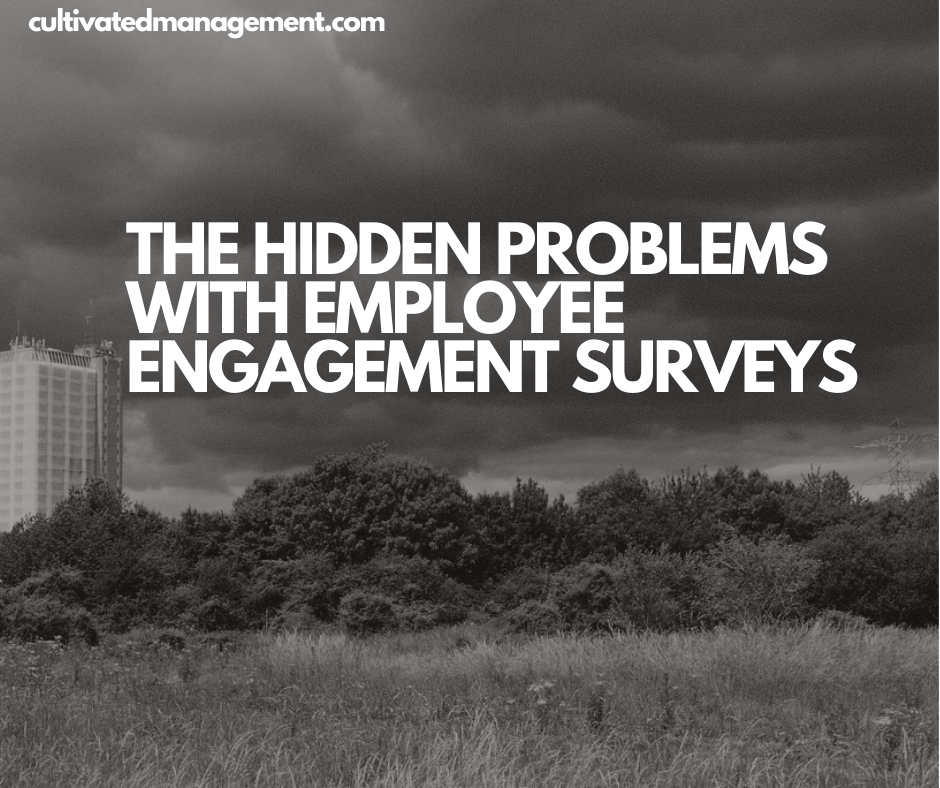
Employee engagement surveys and initiatives are everywhere. It’s almost become a corporate mandate to have one. In some companies, engagement scores are now reviewed alongside profit and loss during annual reporting.
As HR comes under increasing pressure to show value, these surveys are often seen as the primary measure of how well a company “looks after its people.” But here’s the thing: engagement isn’t HR’s job—it belongs to management.
In this post, (and video) I’ll cast a critical eye over employee engagement surveys, why they often fail, and what managers can do to genuinely engage their teams.
The Engagement Survey Premise
The idea behind most surveys is simple: ask a few questions, see if employees are “engaged,” and then assume higher engagement equals higher productivity, which should improve profits.
Sounds logical, right? But in reality, it’s misleading. Surveys don’t measure engagement in a meaningful or actionable way.
I’m not criticising HR—they’re often under immense pressure and engagement surveys are an easy, packaged solution. They’re quick wins that “look good” in performance decks. But just like off-the-shelf Agile frameworks, these surveys rarely solve the underlying problems.
Why Engagement Surveys Often Fail
1 – What Problem Are You Trying to Solve?
Every HR leader and manager should ask this first. Surveys are not neutral—they’re shaped by intention. Are we surveying because we genuinely care about people? Because engagement is a problem? Or simply because everyone else is doing it?
If you don’t understand the problem you’re trying to solve, the data is meaningless. Instead of surveys, managers could spend time observing, listening, coaching, and fixing systemic issues—actions that actually move the needle.
2 – No Agreed Industry Standard
Engagement surveys vary wildly. Different questions, scoring systems, and analysis methods make comparison nearly impossible.
When you see headlines like “UK employees are 45% engaged,” ask yourself: according to which tool? Which methodology? Without an industry standard, these numbers are largely meaningless and can easily mislead executives.
3 – Surveys Are Lagging Measures
Annual surveys capture what was, not what is. Engagement ebbs and flows like human energy. Weekly frustrations, team dynamics, and project pressures cannot be captured in a single snapshot.
Real-time engagement happens every day, in every interaction. Managers—through coaching, feedback, and unblocking obstacles—are the ones who can truly influence it. Surveys cannot replace this.
4 – Disconnect With Business Results
High engagement does not automatically mean high performance. I once worked at a company where engagement scores were off the charts—but half the workforce added little real value.
Some companies even incentivise survey participation. Bonuses for high scores may inflate engagement numbers temporarily, but the underlying business suffers. Engagement must be linked to performance, value creation, and customer outcomes.
5 – They Are Time Consuming
Surveys take significant effort from HR, managers, and employees. Designing, testing, rolling out, analysing, and acting on them consumes countless hours.
Before investing in surveys, ask: what problem are we solving, and can we measure whether the survey actually helps? Otherwise, it’s just busy work.
6 – They Can Be Easily Gamed
People respond based on recent experiences or incentives. Gifts, pay rises, or even manager charm can temporarily boost scores—but do not reflect true engagement. Real engagement comes from consistent relationship-building, not a one-off survey.
7 – They Often Highlight Leadership Failures
Survey questions frequently focus on management support, clarity, and environment. High or low engagement usually reflects how well managers are doing their job.
Instead of relying on a survey to force managers to change, invest in manager development, coaching, and leadership training. Surveys highlight problems—they don’t solve them.
8 – Anonymity Can Amplify Negativity
Anonymous surveys can encourage honesty—but they also often become platforms for venting frustrations. Positive contributions are underrepresented, creating a skewed perception of engagement.
9 – Surveys Alone Are Not Action
Running a survey is not the same as taking action. If insights are not acted upon, the process can harm morale and erode trust. Engagement initiatives must include follow-through, but too often, they do not.
10 – They Reduce People to a Number
Complex human behaviours cannot be accurately represented as a single statistic. Numbers like “45% engaged” are oversimplifications and ignore the nuances of motivation, performance, and culture.
True engagement requires managers to know their people, understand their strengths, and help them tackle meaningful, challenging work.
The Bottom Line: Engagement Belongs to Management
Employee engagement is not HR’s job. HR can provide tools, coaching, and frameworks—but engagement is created daily by managers who:
- Build relationships with their teams
- Observe and unblock systemic issues
- Provide clarity, feedback, and purpose
- Challenge themselves and others to improve work systems
Surveys can complement this work—but they are no substitute for strong management.
Engagement is real-time, action-oriented, and personal. It happens in every 1:2:1, every team conversation, and every project. The companies that truly excel know this—and they invest in managers who can do it well.
👉 Ready to move faster towards your business goals while building a workplace people love? I help managers and leaders get there—through coaching, consulting, and training. See how I can help you.
